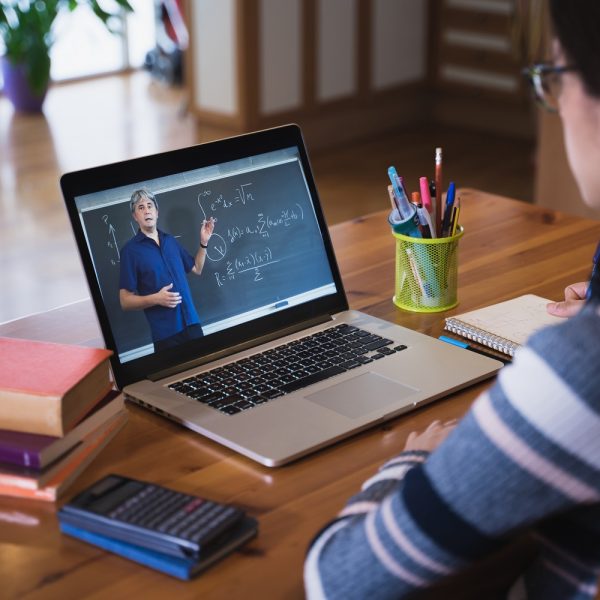Built-in Accessibility Features for Students

Student life can be challenging for anyone, and for persons with disabilities, this is especially true. Of course, there are plenty of tools and apps available to help overcome barriers surrounding disability and education, and we’ve explored many of those solutions in past e-bulletins. Unfortunately, some of these solutions require extensive training, funding/purchasing of equipment, etc., which can sometimes present a whole new set of barriers to the student. Today, we are going to look at some cutting-edge accessibility features that come built-in to mainstream technology. These features are free, they already exist on the device in question, and they are typically fairly easy to activate and operate. Let’s take a look!
Four Apps to Stay Organized at Work

It’s not always easy to stay on task during the workday, and with many of us working from home right now, staying focused on work can be a real challenge. Today, we’re going to look at four apps that are designed to help you stay organized and productive at work.
These apps are designed to help keep you on task regardless of whether you’re working from home or in the office, and even for students with a heavy course load, or for those who simply need a little extra help staying on task, many of the apps that we’re looking at today would be worth considering.
Three Apps to Digitize Math on the Go

Whether you’re a student, a working professional, or anything in-between, there’s a good chance that you’ve struggled with math at least once in your life. Now, imagine if you had the ability to instantly scan and solve the calculation that was in front of you and then have the necessary steps broken down and explained? For those who struggle with math, or for those who simply don’t have the time, these types of apps are an absolute godsend, but not everyone even knows this type of app exists! So, without further ado, we are going to look at three of the best math calculator apps that are available today.
5 Apps to Record Lectures or Meetings

With virtually every smartphone on the planet coming pre-built with recording technology, it’s never been easier to record in-person lectures or meetings. But with so many choices being available, it might not always be easy to know which app is best suited for your needs, so today we are going to look at 5 apps that are worth considering when it comes to recording in-person meetings and lectures.
Kids ToDo List: A To-Do App for Children

Keeping kids consistently on task is no easy feat. Kids need reminders, rewards, and endless patience to keep them on track. And right now, under the current COVID-19 restrictions, many parents are being forced into the role of educator as well as parent. While this is hopefully a very short-term solution, there are some apps and strategies that can make it easier for parents to stay on top of their children’s daily activities and responsibilities, both at home and at school.
4 Apps for Home Learning in 2022

Home learning is something that we’ve talked about before, but with the recent COVID-19 related school shutdown announcements in New Brunswick, we thought it would be a subject worth revisiting. While the current situation is far from ideal, the good news is that there are many fantastic apps available that are designed to bolster at-home learning, and some of them are even free. So, without further ado let’s explore some home learning apps that are worth looking at in 2022.
Dexteria Dots: Strengthening Motor and Math Skills

Teaching math in a fun and engaging way is no easy feat, especially when it comes to young learners. And, when it comes to teaching these young learners, presenting math equations in a visual format seems to net the most success for the majority of learners. Taking a tactile approach to math is another common route for teaching young learners, and the app that we are looking at today seeks to combine those two approaches to create a learning app that is equal parts tactile and equal parts visually based.
Citizen Math: Supplemental Math for Teens

Teaching math in a way that’s engaging and relatable can be a real challenge. The concepts are often abstract and difficult to imagine, and for students with unique learning challenges, certain math fundamentals can present a lot of problems. The website that we are looking at today presents math concepts in a way that students can connect with on a personal, social, and global level.
How to: Access Microsoft Office and App Online

When it comes to word processors, Microsoft Office has been the top choice among professionals for around 20 years. Office is accessible, user-friendly, and packed with all the features you need to get writing. But not everyone knows that Microsoft Office also offers a free version of their app that can be accessed online or via app store. Today we’re going to dive a bit deeper into Microsoft Office’s various online apps, including what makes them different as well as how/where to access the various versions of Word.
Top 5 Apps for Task Management for 2021

It’s not always easy to find a good balance between work, play, school, and everything else in our lives. And with the human brain only being able to remember so much, things are bound to be forgotten along the way. This is especially true for individuals who struggle with executive functioning, but in the end, we all forget things when they aren’t written down. The good news is task management apps have exploded in popularity and usability, and many of them are available for free across different platforms.



